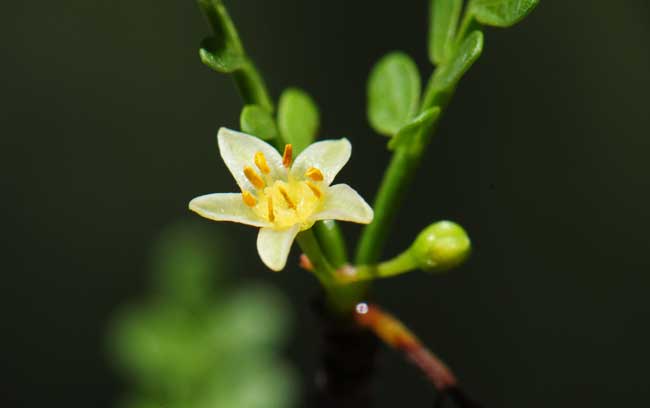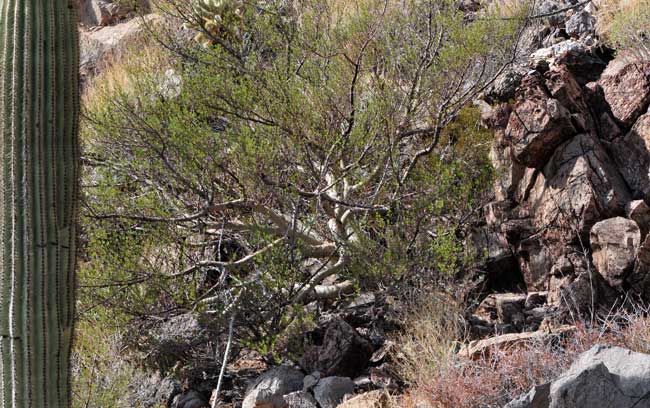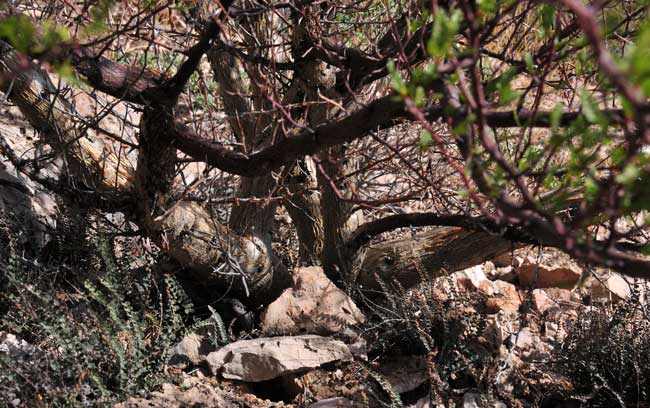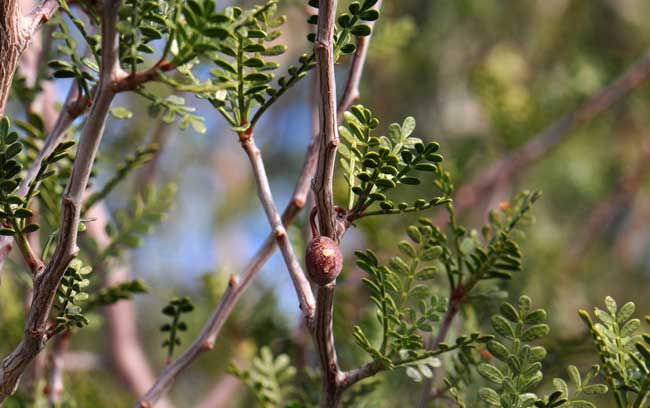Bursera microphylla, Elephant Tree




Scientific Name: Bursera microphylla
Common Name: Elephant Tree
Also Called: Littleleaf Elephant Tree, Little Leaf Bursera (Spanish: Torote Blanco, Copal, Palo Colorado, Torote Rojo, Torote Colorado, Cuajiote Blanco, Torote)
Family: Burseraceae, Elephant Tree or Torchwood Family
Synonyms: (Elaphrium microphylla)
Status: Native
Duration: Perennial
Size: Up to 20 feet, truck diameter of 1 foot or more.
Growth Form: Small tree or large shrub; trunk and branches are "fat" and swollen-looking; branches streaked red or reddish-brown; older bark fades to white; short with squatty profile.
Leaves: Green; alternate, deciduous, glabrous, pinnately compound, once- or twice-pinnate, leaflets narrowly oblong to linear, margins entire.
Flower Color: Yellow, white or cream; flowers with 4 or 5 petals and sepals, fruit is a hanging drupe (see photo above).
Flowering Season: June and/or July.
Elevation: Up to 2,500 feet.
Habitat Preferences: Abundant locally where found on arid rocky slopes and limestone soils.
Recorded Range: Rare in the United States, Bursera microphylla is found only in AZ and CA. It is also native to northwest Mexico.
North America & US County Distribution Map for Bursera microphylla.
U.S. Weed Information: No information available.
Invasive/Noxious Weed Information: No information available.
Wetland Indicator: No information available.
Threatened/Endangered Information: No information available.
Comments: A Sonoran Desert species, Elephant Tree foliage is aromatic and its name is in reference to its massive, swollen-looking even grotesque, trunks which may resemble an elephants trunk or leg. Arizona and California represent the northern most limits of Elephant Tree. Elephant trees are not frost tolerant and they are subject to natural "pruning" losses due to freezing temperatures.
In addition to Elephant Tree Family, the Burseraceae family is also known as; Frankincense and Myrrh Family, the Incense Tree Family and the Torchwood Family.
Elephant Tree has one or more ethno-botanical uses identified at Native American Ethnobotany, University of Michigan, Dearborn.

